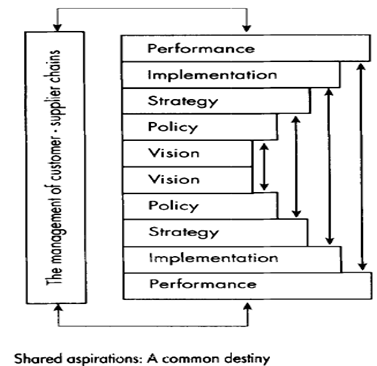Towards Single Sourcing Customer-supplier Chains
- Zero Defect policies: High commitment to producing Zero Defect products;
- Just In Time delivery: as part of a wider JIT philosophy which links suppliers and customers together;
- Encouragement of innovative thinking: Evidenced by team work, inter-organisational activities for development of new designs/products, successful implementation of quality circles;
- Culture, people, and attitude: Performance of customer/supplier chains is viewed from a macro level, from a societal perspective rather than measured in too specific terms.
The comparative study has also concluded that there are six main factors which distinguish the American approach from the Japanese one. These include the following:
- Independence of suppliers from customers (OEM): Lack of synchronization, desire to remain independent;
- Selection of suppliers based on price quotation: Price is still the deciding factor and therefore multiple sourcing is an easier alternative;
- Less user/producer interface: Limited to the order at hand rather than long term R&D relationship and co-ordination of common efforts. Less emphasis on team work and exchanges;
- Zero Defect policies: Emphasis on quality control rather than ‘built in quality’;
- A forced Just In Time Delivery: Halfhearted effort, carried out because of pressures rather than a firm belief in its possible outcomes;
- Less emphasis on innovation: Less abundant innovative thinking because of limited exchanges.
This study clearly highlights that single sourcing can be rendered possible if some of the nine key criteria in the Zaibatsu model are applied in the West.
Customer bonding:
The process of tying a customer to a particular firm’s product or service
Customer bonding means that the commitment is shifted from providing ‘customer service’ to ‘service to the customer’, which may mean that a dynamic approach to responding to customer requirements is implemented rather than mechanical response by providing customers with the same things again and again. Service to the customer means a willingness to help customers solve problems. Customer supplier chains based on single sourcing have to some extent reflect more similarities than differences
Shared aspirations: A common destiny
The level of closeness should show a mirror-image, common approach towards competitiveness,
